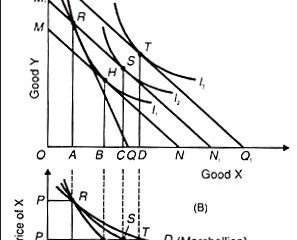

The Hicks Substitution Effect Explained: Theory, Detailed Graphs, and Real Applications (2025 Guide)
Explore the Hicks substitution effect in microeconomics, from intuitive explanations of utility theory and graph diagrams to real-world examples, exam strategies, and comparisons with the Slutsky method.


Understanding Demand Functions: How the Inverse and Direct Demand Equations Shape Market Pricing
This article delves into the key concepts of inverse and direct demand functions, explaining how they show the relationship between price and quantity demanded. It also covers demand curve interpretation and practical applications in market analysis.


The Three Key Principles of Microeconomics: Understanding Market Behavior and Rational Decision-Making
Explore the third fundamental principle of microeconomics that explains how rational individuals make decisions by comparing marginal benefits and costs. Understand its impact on consumer choices, business strategies, and market behavior.


Understanding Price Discrimination in Monopoly Markets: A Diagrammatic Approach
Learn how price discrimination works under monopoly, how monopolists set different prices in segmented markets, the role of elasticity, and the impact on profits and consumer surplus. Detailed explanation with examples and graphical illustrations.


About Demand Curves: Types, Examples, and Their Role in Microeconomics
Learn the fundamental types of demand and supply curves and their elasticity characteristics. This microeconomics guide explains what influences shifts in curves and how market interactions lead to equilibrium prices and quantities.


INDIAN ECONOMIC SERVICES PAPER III GENERAL ECONOMICS SOLUTION
SECTION—A (Compulsory Section) 1. Answer all the following parts in about 100 words each:5×6 = 30 (a) How is an optimum tax rate defined?...


UPSC ECONOMICS (PAPER II) 2023 Complete solution
SECTION-A 1(a) Land system during the British rule was responsible for sustained poverty and stagnant growth in India. Comment ANS: The...




_edited.jpg)
































